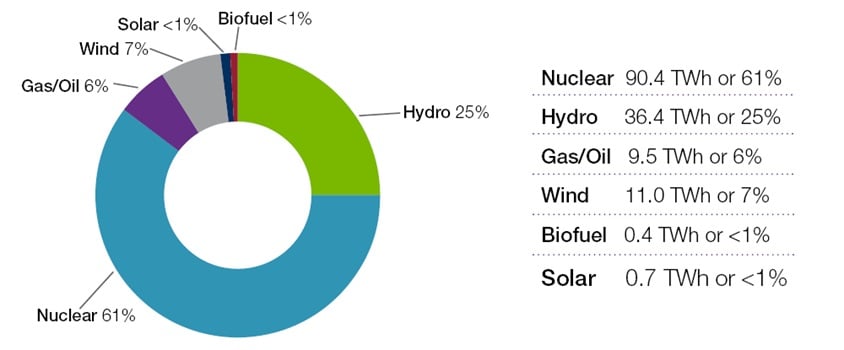
Nous sommes désolés. Le contenu de cette page n'est présentement disponible qu'en anglais.
Ontario looks to kick-start the new hydrogen economy
Part two of BLG’s hydrogen economy series
The world is looking with renewed interest at the role hydrogen, the universe’s most common element, can play in a low-carbon future. Canada has been holding a series of round tables with various sectors of the economy, environmental groups and other special interest groups, to map out a nation-wide strategy. On November 13, 2020, the federal government confirmed that they will be launching a national hydrogen strategy before the end of the year.
Some stakeholders believe Canada is playing catch-up, with many jurisdictions around the world including the EU, Germany, South Korea and Japan, investing billions of dollars into research and deployment. The EU is leading the way on zero-to near zero-carbon hydrogen and announced plans for 280 GW more renewables capacity by 2030, including 40 GW of electrolyzer capacity, equating to approximately 160-200 TWh.1
The Ontario government is acting quickly to develop its own plans for a Made-in-Ontario hydrogen plan. On November 19 2020, the Ontario government released a discussion paper titled Ontario Low-Carbon Hydrogen Strategy (the Discussion Paper)., The Ontario government sees the hydrogen and clean tech sectors as an area of opportunity for post-COVID-19 economic recovery. The Ontario government is seeking stakeholder feedback by January 18, 2021 on the plans and principles underlying its proposed strategy (information on how to provide feedback is included below), which is part of its Made-in-Ontario Environment Plan. The Environment Plan, released in November 2018, commits the province to reducing greenhouse gas emissions to 30 per cent below 2005 levels by 2030, in line with Canada’s 2030 target.
Producing hydrogen
Hydrogen can be used to decarbonize the economy in many ways; however, the key is in its production. It takes a significant amount of energy to produce hydrogen, and there are several ways to go about it. Electrolysis – the process of separating the H molecules from H2O – relies on electricity and water. The Discussion Paper refers to Green, Blue and Grey hydrogen, terms that have been adopted over time in the energy sector to mean respectively, according to the International Energy Agency:
- GREEN Hydrogen: produced using renewable energy.
- BLUE Hydrogen: produced using natural gas with carbon capture use and storage.
- GREY Hydrogen: produced using natural gas.
While the Discussion Paper adopts the above terms, it makes an important distinction when it comes to Green hydrogen, stating that this type of hydrogen is made ‘using low-carbon sources like electricity from Ontario’s grid or renewable organic material’. The Discussion Paper goes on to state that ‘in 2019, approximately 94% of the electricity generated in Ontario was emissions-free.’ The Independent Electricity System Operator breaks down the yearly output by generator type for 2019 in Ontario as follows:

As the pie chart demonstrates, Ontario benefits from an abundant source of hydro electricity. However, the bulk of Ontario’s power is provided by its nuclear plants, which are almost emissions free. On an international scale, whether nuclear power can be used to produce Green hydrogen is not yet settled. Germany has ruled it out2, and nuclear power is excluded from the IEA’s definition of Green hydrogen. However, France, which relies on nuclear power for more than 70 per cent of its energy needs, would like to see nuclear power included and is using the term ‘carbon-free hydrogen’.
Storage and distribution
Hydrogen is an odourless, colourless gas at normal atmospheric temperatures and pressures. If cooled to negative 253 C⸰, it takes a liquid form. Once it is produced, it can be moved through ‘dedicated pipelines, or as a liquid in ships and trucks to fuelling stations.’ NASA and the U.S. Air Force use liquid hydrogen as rocket fuel. The mention of ‘dedicated pipelines’ in the Discussion Paper is important, since there are technical limitations on the usage of existing natural gas distribution infrastructure to distribute or transport hydrogen.
The Ontario Energy Board recently approved an application by Enbridge Inc. to blend its natural gas with up to 2 per cent hydrogen. However, it is estimated that even concentrations of 15 per cent hydrogen will require modifications to natural gas infrastructure to ensure safe transport.3 Hydrogen embrittles steel and the welds used to fabricate natural gas pipelines. Research is currently underway in many jurisdictions to try to solve this issue.
End uses
The Discussion Paper is clear that hydrogen will play an important part in reducing Ontario’s carbon footprint. The Discussion Paper points to several areas in which hydrogen can be effectively utilized:
- Industry: Low carbon hydrogen could replace hydrogen made from natural gas, which is currently used as a chemical input in fertilizer production and in oil refineries;
- Transportation: Hydrogen is a leading option to reduce greenhouse gas emissions from long-distance and long-haul road transport;
- Electricity: Hydrogen can be used to store electricity (producing hydrogen through electrolysis when there is surplus power), particularly electricity generated from renewables; and
- Buildings & Communities: Subject to technical limits, hydrogen can be blended into natural gas and distributed through the natural gas pipelines, making Ontario’s natural gas cleaner.
Discussion paper
The Discussion Paper highlights some of the key activities that are already taking place in Ontario with respect to hydrogen, as well as some of Ontario’s competitive advantages, mostly due to its low-carbon electricity grid, and regional opportunities. A reference is made to several policy measures the government already has in place that will support growth of the hydrogen sector. One such policy measure is Ontario’s commitment to reducing electricity rates, including through the Industrial Conservation Initiative.
The Discussion Paper outlines key principles underpinning Ontario’s hydrogen growth strategy are and stakeholders are encouraged to provide feedback on all of them. The key principles include:
- Supporting the Environment Plan by reducing greenhouse gas emissions through low-carbon hydrogen;
- Generating economic development and jobs by building a hydrogen industry involving all regions of Ontario to create jobs and facilitate economic recovery, seek strategic partnerships and support innovation;
- Promoting energy resilience by considering the value of domestic hydrogen for Ontario’s energy bills and evolving energy system;
- Reducing barriers and enabling action in order to attract investment and create a level playing field between technology options; and
- Using hydrogen where and when it makes sense, focusing on areas that are most likely to become cost-effective.
The Ministry of Environment, Parks and Conservation has also asked that stakeholders comment on the vision for Ontario’s hydrogen strategy and what the key outcomes should be. The Discussion Paper further outlines 18 specific questions for which it is seeking input from stakeholders. Comments can be submitted on the Environmental Registry or by email at [email protected] until January 18, 2021.
Conclusion
Jurisdictions around the world now have time-limited goals in place to meet net-zero, or less than net-zero, greenhouse gas emissions - some as early as 2030. The race to decarbonize the economy is well underway, bringing with it clean tech jobs, capital investment and investment in R&D. In order to compete, Ontario will need to ensure that it provides a framework that can support the growth of Green and low-carbon hydrogen. The Ontario government’s Discussion Paper is a great first step towards helping Ontarians enter the hydrogen economy in a meaningful way.
BLG’s Energy Group has worked with the private sector, utilities, municipal governments and the Ontario government on various transactions and initiatives involving hydrogen, renewable energy and power-to-gas. Please reach out to our qualified experts if you require advice regarding the Discussion Paper, or other hydrogen opportunities.
1 Communication from the Commission to the European Parliament, the Council, the European Economic and social Committee and the Committee of the Regions: A Hydrogen Strategy for a climate-neutral Europe.
2 Recharge: Nuclear no option for hydrogen production, German government.
3 Office of Energy Efficiency & Renewable Energy, U.S. Department of Energy, Hydrogen Pipelines
- Par : Kristyn Annis, John A.D. Vellone
Key Contacts
-

Kristyn Annis
Associée
Services
- Droit des sociétés et droit commercial
- Énergie – Électricité
- Droit autochtone
- Fusions et acquisitions
- Stockage
- Voir la biographie
-

John A.D. Vellone
Associé et Chef des affaires, Énergie, Ressources et énergie renouvelable
- Location
- Toronto
- [email protected]
- Phone
- 416.367.6730
John Vellone
Associé et Chef des affaires, Énergie, Ressources et énergie renouvelable
Services
- Droit des sociétés et droit commercial
- Énergie – Électricité
- Énergie – Réglementation de l’électricité
- Infrastructures publiques
- Équipe du Nord®
- Voir la biographie
-

J. Mark Rodger
Associé
Services
- Énergie – Électricité
- Infrastructures
- Droit des sociétés et droit commercial
- Droit autochtone
- Fusions et acquisitions
- Voir la biographie
-

Shane Freitag
Responsable national, Énergie – Électricité
- Location
- Toronto
- [email protected]
- Phone
- 416.367.6137
Shane Freitag
Responsable national, Énergie – Électricité
Services
- Énergie – Électricité
- Énergie – Réglementation de l’électricité
- Infrastructures
- Énergie – Pétrole et gaz
- Infrastructures publiques
- Voir la biographie
-

Peter Bryan
Associé
Services
- Droit des sociétés et droit commercial
- Énergie – Pétrole et gaz
- Fusions et acquisitions
- Énergie – Électricité
- Concurrence/antitrust et investissements étrangers
- Voir la biographie